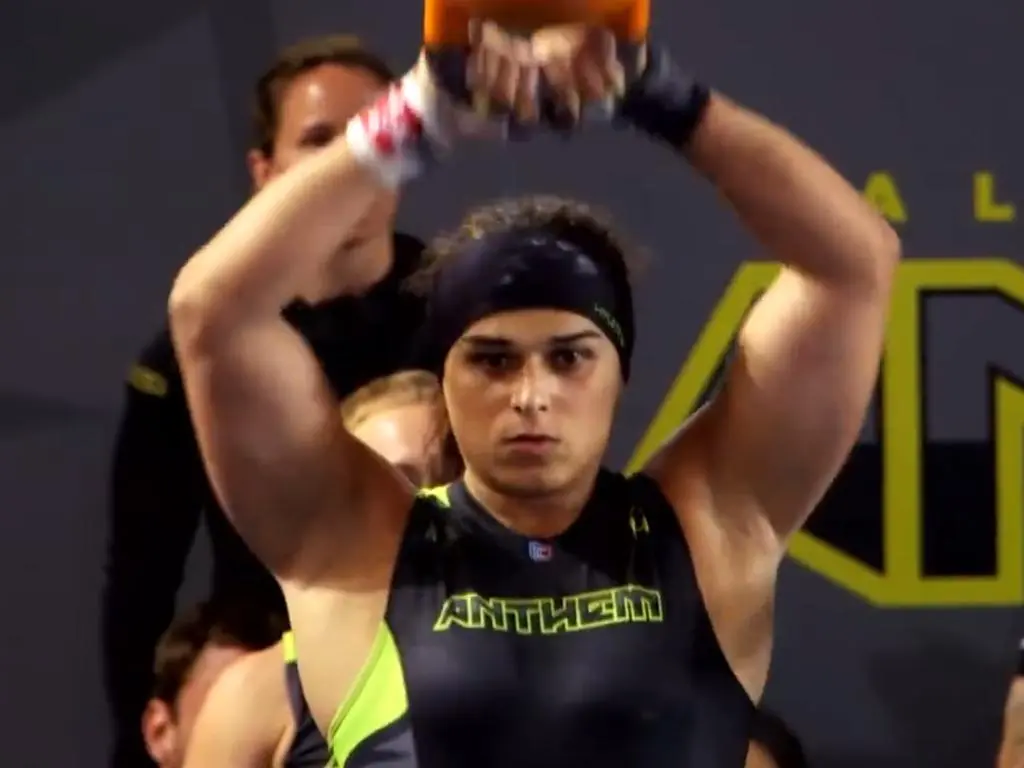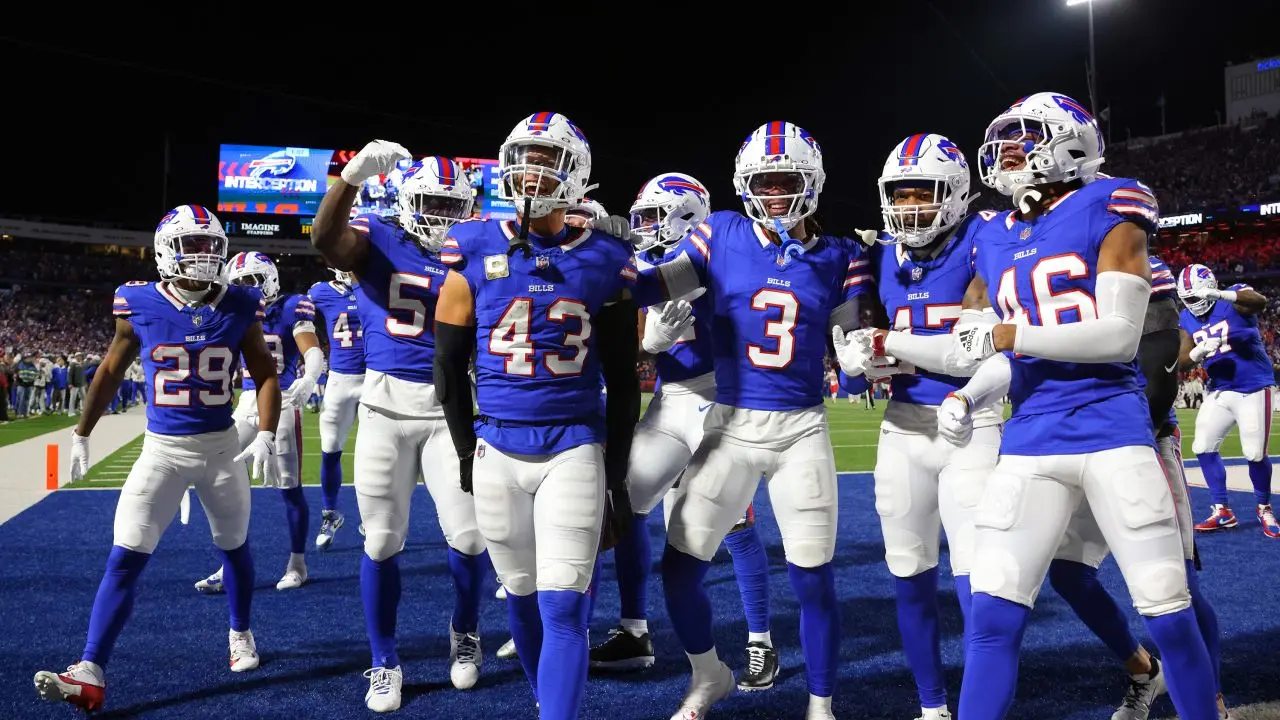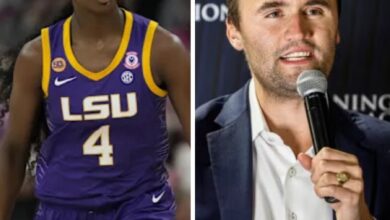ss “I AM A WOMAN, AND I FEEL OFFENDED BY BEING FORCED TO TAKE SEX TESTING,” swimmer Hannah Caldas fires back at the media after a five-year ban from the International Swimming Federation. “My medals and achievements are the result of my own hard work.”

In the heated waters of international sports governance, a Portuguese-born American swimmer named Hannah Caldas has emerged as a vocal advocate for privacy and fairness.

At 47 years old, Caldas, who identifies as a woman, finds herself at the center of a storm following a five-year ban from World Aquatics, the sport’s global governing body.
The ban, announced in late October 2025, stems from her refusal to undergo a chromosomal sex verification test demanded as part of an eligibility probe.
Caldas competed in the women’s senior category at the 2024 World Aquatics Masters Championships in Doha, Qatar, where she secured multiple medals in events like the 50m freestyle and 100m butterfly.
Her victories, however, drew complaints from competitors who questioned her eligibility under World Aquatics’ strict policies for women’s categories, which require proof of no Y chromosome for transgender women.
This policy, updated in 2022, aims to ensure “fairness” in elite and masters competitions by excluding those who transitioned after puberty.
Caldas, born in Vizela, Portugal, and now representing the United States through the New York Swimming Federation, has a storied career in masters swimming spanning over three decades.
She previously competed in men’s categories during her college years from 2002 to 2004 but has since identified and competed as a woman, amassing national records and accolades in U.S. Masters Swimming (USMS) events.
In 2024 alone, she dominated a San Antonio meet, winning five gold medals in the 45-49 age group, prompting backlash and even a state investigation by Texas Attorney General Ken Paxton.

Paxton’s probe accused USMS of deceptive practices that disadvantaged female athletes, highlighting the growing tensions around transgender participation in women’s sports.
Despite this, USMS cleared Caldas in August 2025, affirming her eligibility based on her birth certificate—listing her as female—and self-identification, allowing her to compete domestically.
World Aquatics, however, escalated the matter, requiring a genetic test at Caldas’ expense to verify compliance with their chromosomal criteria.
The test, described as invasive and costly—often involving blood draws or cheek swabs for DNA analysis—costs hundreds of dollars and is rarely covered by insurance for non-medical purposes.
Caldas refused, arguing it violates her privacy and sets a dangerous precedent for all women athletes.
In a powerful statement released through the New York Swimming Federation on October 22, 2025, Caldas declared: “I AM A WOMAN, I FEEL OFFENDED BY BEING FORCED TO TAKE A SEX TESTING.”
She continued, emphasizing her autonomy: “My medals and achievements are thanks to my efforts,” rejecting any implication that her successes were unearned.
This outburst came amid media portrayals that misgendered her or framed her as a “trans man competing as a woman,” fueling a narrative of controversy.
Caldas hit back at the press, accusing them of sensationalism: “The media twists my story to fit agendas, ignoring the human cost of these demands.”

Her response resonated widely, garnering support from LGBTQ+ advocacy groups like GLAAD and Athlete Ally, who praised her for protecting “intimate medical information.”
She elaborated: “Chromosomal tests are invasive and expensive procedures. My insurance refuses to cover such a test because it is not medically necessary.”
Moreover, she noted that no U.S. state mandates genetic testing for recreational sports like masters swimming, nor does USMS require it for national events.
By October 24, 2025, Caldas had accepted the ban’s implications, stating: “I understand and accept the consequences of not complying with a World Aquatics investigation.”
“But if a five-year suspension is the price I must pay to protect my most intimate medical information, then it’s a price I am happy to pay—for myself, and for every other woman who does not want to submit to highly invasive medical testing just to swim in an older-adult competition.”
This suspension, effective until October 18, 2030, disqualifies all her results from June 19, 2022, to October 17, 2024, erasing golds from Doha and other meets.
It marks a significant personal loss; Caldas invested thousands in travel and training for these recreational events, which she views as lifelong passions rather than professional pursuits.
Beyond the pool, Caldas is an accomplished CrossFit athlete and community coach, using her platform to mentor young swimmers on resilience and inclusivity.
Her case echoes the 2022 saga of Lia Thomas, the first transgender woman to win an NCAA swimming title, who was similarly banned by World Aquatics after challenging their rules at the Court of Arbitration for Sport (CAS).
Thomas’ appeal failed, upholding the federation’s authority to enforce chromosomal restrictions for “integrity and fairness.”
Caldas has hinted at a potential CAS appeal but expressed reluctance, saying on November 1, 2025, in an interview with PinkNews: “After 30 years in sanctioned events, I’m prepared to let it all go if it means standing for what’s right.”

Supporters, including the Independent Council on Women’s Sports (ICONS), have mixed reactions; while some celebrate the ban as protecting cisgender women, others decry it as discriminatory.
ICONS previously criticized Caldas’ margins of victory as “absolutely insane,” claiming they laughed at female competitors’ efforts.
Caldas countered this narrative, sharing data from her performances: her Doha times, while fast, aligned with masters records held by diverse athletes, not anomalies.
She argued that age-group swimming celebrates personal bests over cutthroat rivalry, and her efforts—endless laps, dietary discipline, and injury recoveries—mirror those of any dedicated swimmer.
The ban’s fallout extends to broader debates on transgender rights in sports, intensified by the 2024 Paris Olympics controversies involving boxer Imane Khelif.
Khelif, disqualified from the women’s category by the International Boxing Association over unspecified gender tests, won gold under IOC rules, sparking global outcry.
Caldas’ situation reignited these flames, with conservative outlets like OutKick labeling her a “trans-identifying male” undermining women’s spaces.
Progressive voices, however, frame it as a privacy battle: why demand genetic proof from one woman when birth certificates suffice for others?
As of November 11, 2025, no appeal has been filed, but petitions on Change.org urging World Aquatics to revise policies have surpassed 50,000 signatures.
Caldas has pivoted to unsanctioned open-water swims and coaching, vowing: “The water doesn’t discriminate; why should we?”

Her story underscores a pivotal tension: balancing competitive equity with human dignity in an era of evolving gender policies.
World Aquatics defends its stance, citing over 600 athlete consultations leading to the 2022 framework, which includes an “open” category for transgender competitors—though uptake remains low due to stigma.
Critics argue this segregates rather than includes, forcing unnecessary choices.
In the U.S., USMS’ contrasting decision highlights jurisdictional rifts; while international bodies tighten rules, domestic ones prioritize self-ID for recreational levels.
This duality leaves athletes like Caldas in limbo, competing nationally but barred globally.
Looking ahead, Caldas plans a memoir tentatively titled “Laps of Liberty,” chronicling her journey from Portuguese pools to American advocacy.
She told SwimSwam on November 5: “This isn’t just my fight—it’s for every woman tired of proving her womanhood on a lab slide.”
Her resilience inspires, reminding us that true champions measure success not in medals, but in the courage to dive into uncomfortable truths.
As debates rage, Caldas embodies the swimmer’s ethos: stroke by stroke, against the current, refusing to be pulled under.
🔥“THE TRANSFER OF THE CENTURY!” — Sean McDermott and Terry Pegula Just Announced Buffalo’s Plan to Bring Three of the Best Players in the World to the Bills for the 2026 Season. When McDermott Revealed Their Names, Fans FROZE… But What He Said Right After That Made the Entire NFL Hold Its Breath.

In the heart of Buffalo, where the chill winds off Lake Erie carry the echoes of Super Bowl dreams, a bombshell dropped that sent shockwaves through the NFL universe. On a crisp November afternoon in 2025, Buffalo Bills head coach Sean McDermott and owner Terry Pegula stepped up to the podium at One Bills Drive. The air was thick with anticipation. Fans packed into bars across Western New York, eyes glued to screens, hearts pounding. McDermott, ever the stoic tactician, adjusted his tie and leaned into the microphone. “Today, we’re unveiling the blueprint for 2026—a plan to elevate this franchise to championship glory.” Pegula, the billionaire visionary behind the new Highmark Stadium set to debut next season, nodded solemnly beside him.

The room erupted in murmurs. Whispers of trade rumors had swirled for weeks: the Bills’ aggressive pursuit at the 2025 deadline, their cap space ballooning to over $80 million for 2026, and whispers of targeting elite talent. But nothing prepared anyone for what came next. McDermott’s voice cut through the noise like a Josh Allen deep ball. “We’re not just building a contender. We’re assembling a dynasty. And to do that, we’re bringing in three of the best players in the world.” The press corps froze. Cameras clicked furiously. Across social media, #BillsMafia trended worldwide. Who could they be? Free agents? Blockbuster trades? The reveal was imminent, and the tension was palpable.
As the clock ticked past 2 PM Eastern, McDermott paused for effect. His eyes scanned the crowd, a faint smile cracking his usually impassive facade. “First, from the Miami Dolphins: Jalen Waddle. Speed, precision, a nightmare for defenses.” Gasps echoed through the hall. Waddle, the 2022 fifth-overall pick, had torched secondaries for 1,000-plus yards in each of his first three seasons, despite Miami’s rollercoaster campaigns. At 27 in 2026, he’d be a free agent, and sources confirmed the Bills had quietly negotiated an extension framework. Pegula chimed in: “Jalen’s the spark we need opposite Keon Coleman. Imagine him streaking downfield with Josh Allen slinging it—unstoppable.”
The second name hit like a thunderclap. “Next, from the New Orleans Saints: Chris Olave.” If Waddle stunned, Olave paralyzed. The 2022 No. 11 pick had bounced back from a injury-plagued 2024 with a vengeance, amassing 1,200 yards and eight touchdowns in 2025. His route-running wizardry and contested-catch prowess would transform Buffalo’s aerial attack. “Chris is the X-factor,” McDermott continued, his voice steady. “He’s under contract through 2026 on his fifth-year option, but we’ve structured a sign-and-trade that keeps us flexible.” Rumors had linked the Bills to Olave at the deadline, but New Orleans held firm then. Now, with a package of a 2026 second-rounder and depth pieces, the deal was sealed. Fans froze in disbelief—two top-15 receivers in one swoop?

But McDermott wasn’t done. The third revelation? It transcended positions, shaking the league’s foundations. “And finally, the crown jewel: Myles Garrett from the Cleveland Browns.” The arena fell silent. Garrett, the 2017 No. 1 overall pick and perennial Defensive Player of the Year contender, was the unicorn—a 6’4″, 270-pound edge rusher with 98.5 career sacks by age 30. Cleveland, mired in mediocrity, had rebuffed suitors before, but with their 2025 slide to 4-7, the Browns pulled the trigger on a haul: Buffalo’s 2026 first-rounder (top-10 protected), a third, and young DT DeWayne Carter. “Myles is the alpha we build around,” Pegula declared, his voice booming. “With Von Miller mentoring him, our pass rush becomes legendary.”
The names hung in the air like confetti at a parade that hadn’t started yet. Waddle’s blistering 4.37 speed. Olave’s surgical separation. Garrett’s bend-the-earth ferocity. Bills fans, from the tailgates in Orchard Park to the ex-pats in Florida, stopped breathing. Social media exploded: “This is it! Super Bowl or bust!” one tweet read, racking up 50,000 likes in minutes. Analysts on ESPN’s First Take debated furiously—Stephen A. Smith yelling, “Buffalo just flipped the script on the AFC East!” But as the applause swelled, McDermott raised a hand. “Hold on, Bills Mafia. This isn’t just about names. It’s about what comes next.”

What he said right after made the entire NFL hold its breath. “These moves aren’t gambles. They’re calculated strikes in a war for the Lombardi. But hear this: We’re not stopping at three. With the new stadium opening in 2026, we’re committing $250 million over five years to player development—state-of-the-art analytics, recovery pods, mental coaching pods that rival NASA’s. And Josh Allen? He’s the general leading this charge. We’ve locked him in with a historic extension, incentives tied to rings.” Pegula stepped forward, eyes gleaming. “Buffalo’s been the bridesmaid too long. No more. This is our era.”
The implications rippled outward like a stone in Lake Erie. For the Bills, already 7-3 in 2025 and clinging to the AFC’s No. 2 seed, this trio addressed glaring needs. The receiving corps, solid with Shakir and Coleman but lacking elite separators, suddenly becomes a juggernaut. Waddle and Olave flanking Allen? Defenses would stack the box, only to face Garrett’s wrath off the edge—projected 15 sacks in his Bills debut. General manager Brandon Beane, the architect behind it all, had masterminded the cap wizardry: void years from Milano and others cleared $22 million, restructures on O’Cyrus Torrence freed another $10 mil. “We got aggressive,” Beane later admitted in a sidebar interview. “Terry gave us the green light. No half-measures.”
League-wide, the shock was seismic. In Kansas City, Andy Reid reportedly called an emergency film session, eyeing how to counter this revamped Bills attack. The Dolphins, fresh off trading Phillips and others at the deadline, pocketed a king’s ransom but lost their electric return man in Waddle. New Orleans, rebuilding around a young QB, gained picks to stockpile talent. Cleveland? A first-rounder could land a franchise QB in 2026. “This changes everything,” NFL Network’s Ian Rapoport tweeted. “Buffalo’s not punching up anymore—they’re the punch.” Rival GMs scrambled, phoning agents, wondering who was next on the Bills’ hit list. Free agency 2026 suddenly felt like a fire sale for everyone else.

Back in Buffalo, the city pulsed with electricity. Table chicken sales spiked 300% at Anchor Bar. Bills Mafia tables—those iconic setups in backyards and bars—lit up with mock jerseys: “Waddle 17,” “Olave 11,” “Garrett 95.” Highmark Stadium, the old warhorse hosting its final season, sold out in seconds for the remaining home games. The new $2.1 billion palace, rising like a colossus across the parking lot, symbolized the shift: luxury suites, a roof for snowy showdowns, and a fan plaza rivaling Disney World. “2026 isn’t a season,” McDermott told the crowd post-announcement. “It’s our manifesto.”
Yet, beneath the euphoria lurked the stakes. These weren’t cheap dates. The Bills sacrificed draft capital—potentially their highest pick since 2017—and mortgaged flexibility for immediate contention. Injuries had plagued 2025: Dalton Kincaid’s ankle tweak, Ed Oliver’s hamstring pull, Taron Johnson’s nickel woes. Garrett’s arrival plugs the DE void left by AJ Epenesa’s void-year hit, but integration means chemistry drills in OTAs. Waddle and Olave, both route technicians, mesh with Joe Brady’s motion-heavy scheme, but egos in a crowded WR room? Allen’s arm handles it, his 4,500-yard, 35-TD 2025 proving his elite status.
Critics, ever present, nitpicked. “Overpaying for rentals?” one Fox Sports pundit scoffed, noting Waddle’s free agency and Olave’s option year. But Pegula shut it down: “We’ve got extensions teed up. This is long-term.” McDermott, in his eighth year, faces his biggest test—no more moral victories. His 8-0 post-bye record? A good omen, but playoffs demand rings. The AFC East, with the Jets fire sale and Pats’ rebuild, bows to Buffalo. Yet, the Chiefs loom, Mahomes’ magic a perpetual thorn.
As dusk fell on announcement day, fans gathered outside the facility, chanting “Three the hard way!” Fireworks lit the sky—red, royal blue, and white. This wasn’t hype; it was history unfolding. The Transfer of the Century wasn’t just moves; it was a declaration. Buffalo, the frozen tundra of heartbreak, thaws into title town. McDermott’s final words echoed: “We’ve waited long enough. 2026: Our time.” The NFL exhaled, but the Bills? They inhaled deeply—and charged forward.

